Sourdough Tianmanjiang
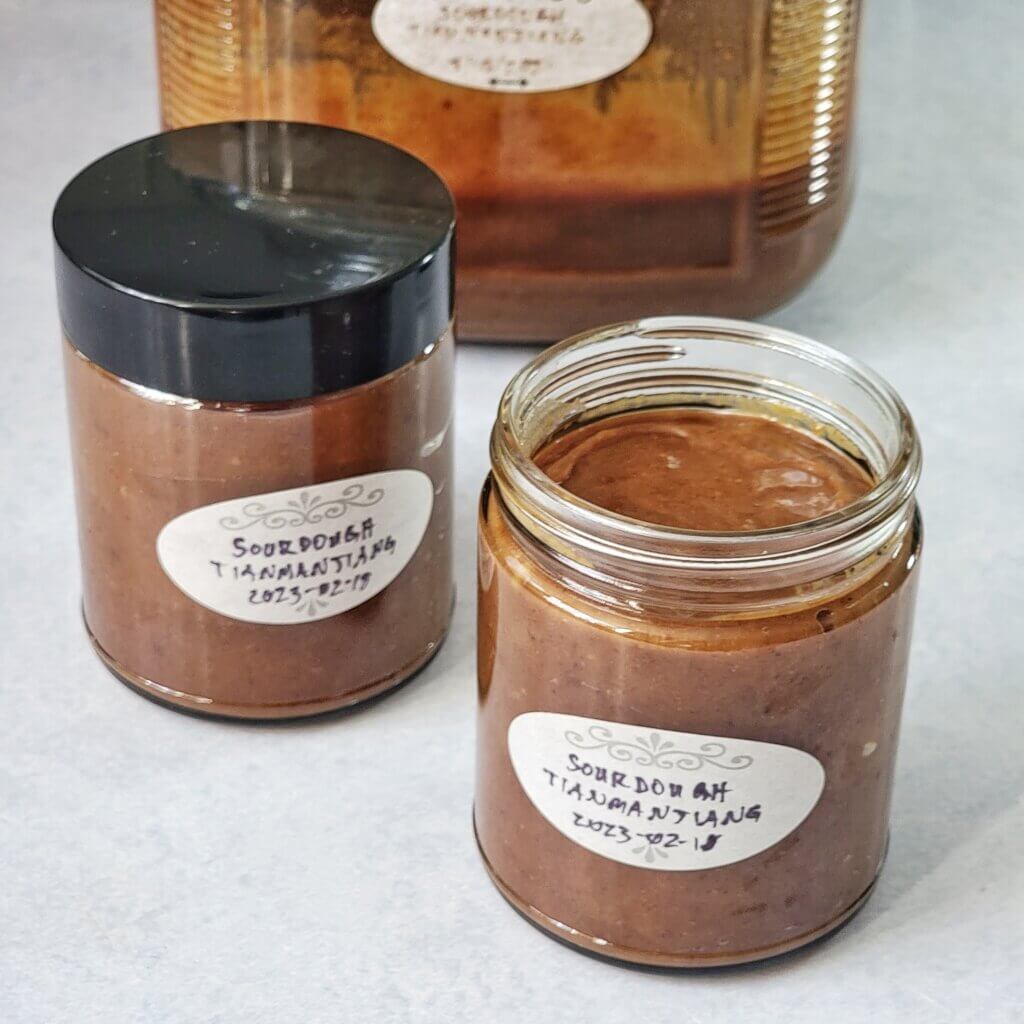
There was a very special fermented sauce recipe that came up during Mara King‘s Kojicon session and subsequent Q&A: Tianmanjiang. Apparently it was highly requested—I had never heard of it before!
Tianmanjiang, simply put, is a fermented bread sauce, though it is known also as “sweet bean sauce” due to the optional inclusion of fermented soybeans. It is usually made from leftover mantou, which are soft steamed wheat buns. Mara explained that she made her own using our friend koji, growing it directly on pieces of mantou and then combining them with water and salt. She let this ferment in an open (cloth-covered) container for a year, occasionally stirring and also setting it out in the sun when possible. This allowed the mixture to reduce and thicken while also darkening over time.
It just so happens that I had been saving the stale ends of my sourdough bread for a month or two in the freezer*. I had heard of “breadso”, or bread miso, many times (mostly thanks to Kirsten Shockey) so I figured I’d eventually do something like that. But this thick, dark sauce was too enticing for me not to try. Also, since I keep most of my discard in a jar in the fridge, I figured it would be a good chance to use a whole bunch of that up at once as well, while simultaneously injecting the ferment with loads of already active and beneficial bacteria & yeasts.
And so, I embarked upon this adventure. I had about 1kg of stale bread total. There was much chopping—which my “chef’s callous” was overwhelmed by, causing quite the blister. But that’s how you develop an even stronger chef’s callous!


I then steamed the cubed bread (in 2 batches, the volume of 1kg of bread is much larger than 1kg of rice!) for about 30 minutes. This served 2 purposes: heat it up to sterilize the bread, and also hopefully introduce some moisture back into it. After cooling below 100°F, the bread got a dusting of 10g dispersed spores (approximately 1g of spores total). In hindsight, I’d probably add additional flour to help coat the bread next time.
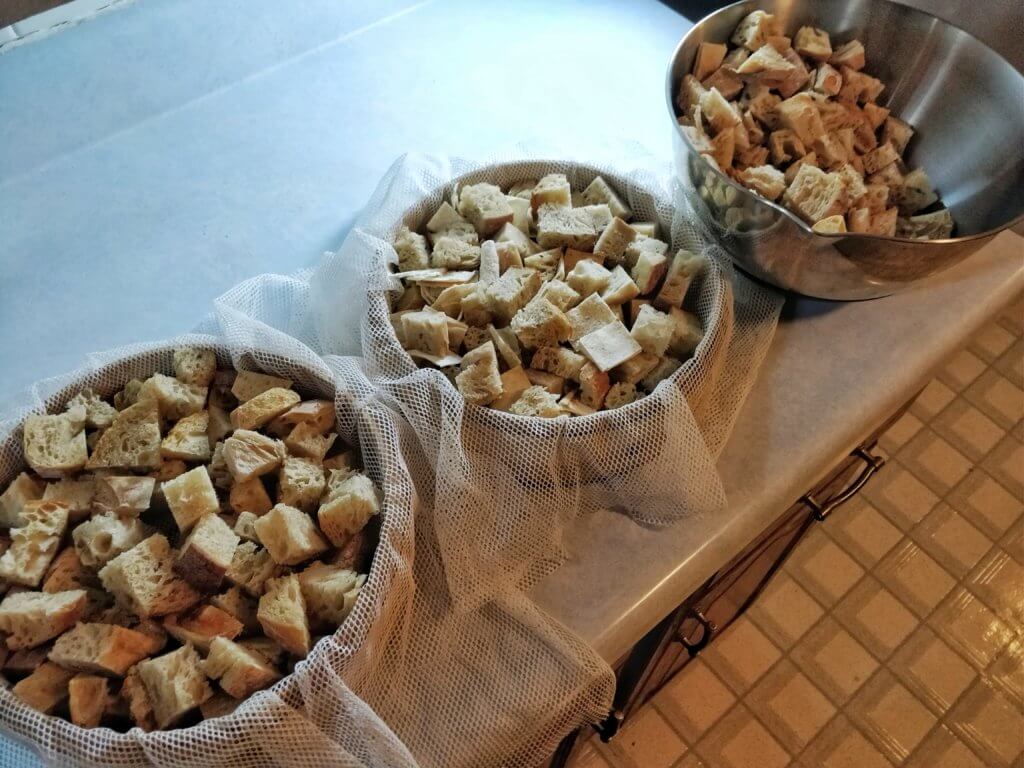

The bread was then incubated for just about 52 hours total. Usually, when incubating koji rice, 36 hours is the perfect amount for full growth before sporulation. In this case, we actually want some sporulation, but the growth on this bread was a little less even than I get on rice. I started pulling out the well-covered and sporulated pieces around hour 42 and allowed the less covered pieces to continue incubating until I decided it was enough at 52 hours. I timed the start of incubation (8pm) so that the final 36-48 hours would fall during the day (8am) so I was able to check in like this.

The trays of bread were set in the fridge, uncovered, overnight, to halt the growth and dry out just a bit.
Day 4—3/10
Time to finally put this together!
- 1kg kojified stale sourdough bread cubes
- 1L spring water
In batches small enough to fit into my food processor, I blended the bread a little with enough water to moisten until chunky to increase the surface area. All of the bread mush and the rest of the water was added into an appropriately-sized glass jar.

- 400g sourdough discard
I added all of the sourdough discard I had collected in the fridge to the mix. That brought the total weight to 2524g, which I used to calculate 10% salt, 252g, which was also added. The salt, aside from the usual protection from toxic microbes, should hopefully also keep the yeasts in the discard from turning this completely into alcohol, at least I think.
I’m keeping the jar in my “sun room”, a small porch off the side of our house that we converted into an enclosed room. It has big windows and is also home to basically all of my plants, at least during the winter. I’ll keep the lid off fairly often, and I’m hoping that the glass jar will allow that crucial sunlight darkening to take place. I’ll stir frequently, maybe once per day, for the first week, and probably once a week or so after that.

Month 2—4/3

I have been keeping the lid off and stirring occasionally—definitely not like clockwork, but approximately once a week or so. The volume has reduced, the level has dropped by about 2cm or so. I didn’t think to mark the starting level initially, but I’ve marked it based on the photos from the initial state.
The aroma is fruity, with a distinct strawberry note. At least that’s what I’m smelling; my wife told me it smells like bread.
Year 2—2022-03-13
I have not been keeping up any sort of regular stirring schedule, and on top of that, it’s been hard to keep the jar in a place that will get sunlight since my plants arguably need it more.
It is seed starting time, which means I will have even less room to keep things that aren’t plants, so I’ve finally put up some shelves in this weird corner opposite the windows.

The tianmanjiang has separated a little into a clear but dark liquid on top. Perhaps if I had been more diligent stirring and sunning, the entire contents would be that dark and probably thicker.
I have collected another large batch of sourdough bread ends so I’ll be looking for something to do with those soon. I think I’ll keep this tianmanjiang around, possibly for another year, and try to stir it a bit now that it should be getting some sun.
Year 3—2023-02-18

The heading may be confusing, as it’s (almost) the start of year 3, meaning it is approximately 2 years old.
It is the weekend before Kojicon 2023, and Kojicon always motivates me to play with my food—which in this case means checking up on a project that I started after the very first Kojicon in 2021.
I am terrible at long-term upkeep, so during the first year I mostly kept the lid on and forgot about it. Last year (after the previous entry) I mostly kept the lid open with just the cloth covering during the summer, and I’m glad I did. While I still didn’t stir it, it darkened to a milk chocolate color, reduced to about half its original volume, and formed a lovely, crystalized surface.
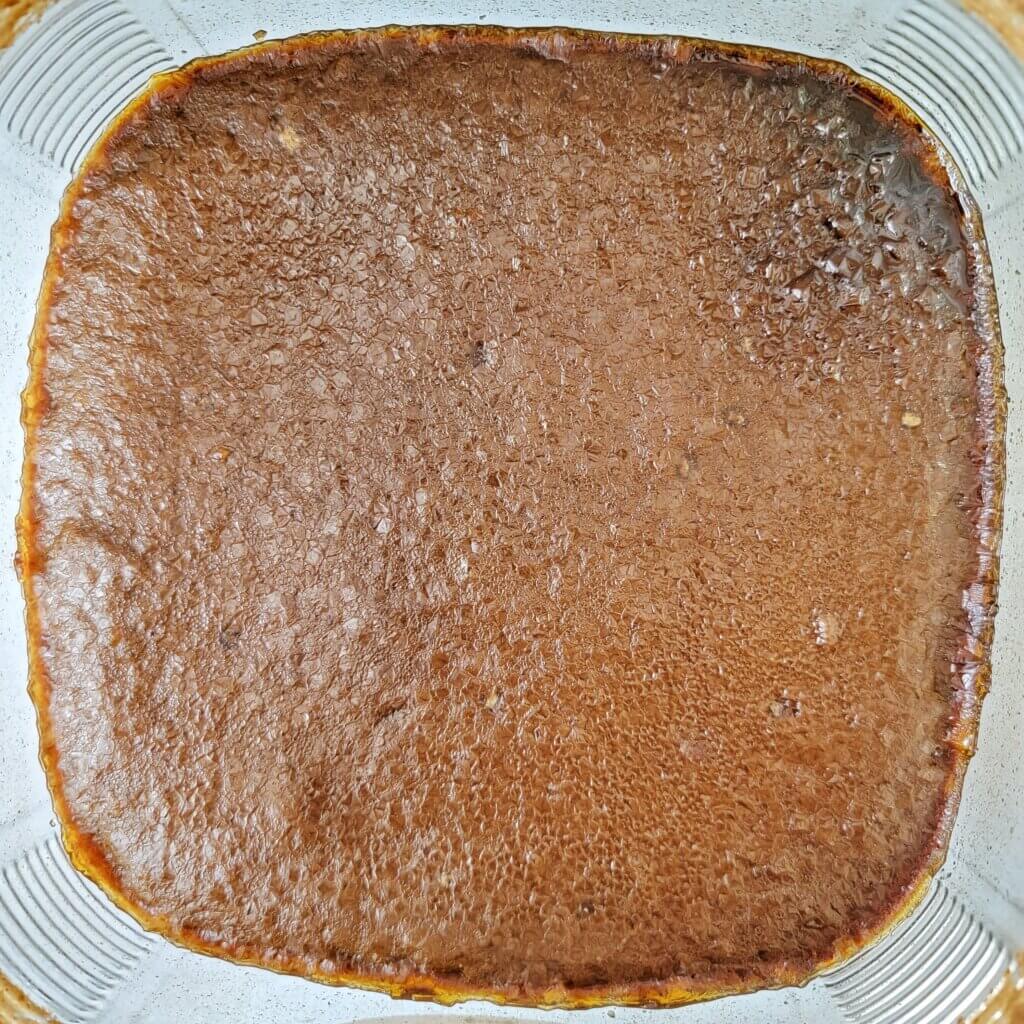
This amazing, salty crust and dark caramel color convinced me that it’s definitely ready!
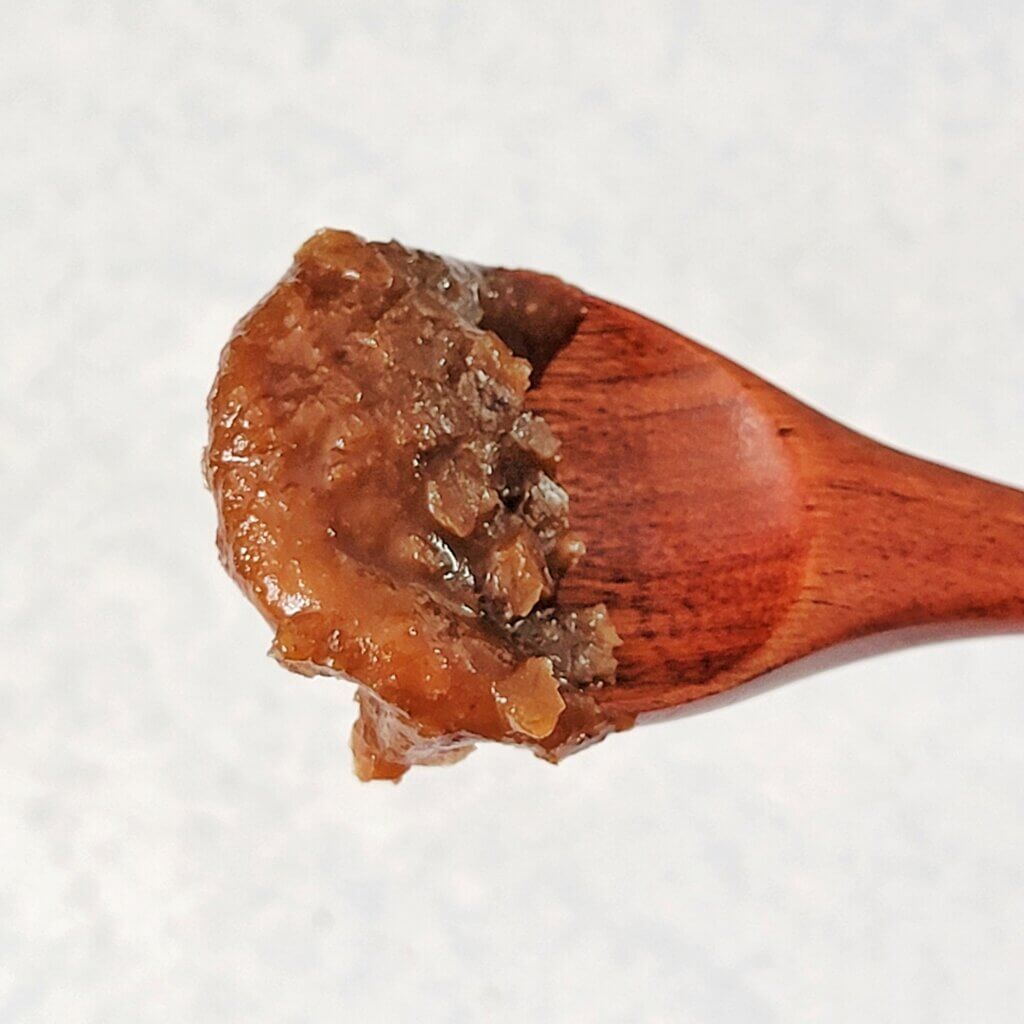
I knew that photos just wouldn’t cut it, so I made a quick video so you could hear it!
This stuff is fantastic, even better when you consider it was made out of stuff that otherwise would have been thrown away. Just hard, stale bread ends and over-fermented sourdough starter, AKA discard.
It’s packed with umami, of course, but it’s also equally salty and sweet. I get a hint of roasted, salted nuts. It has also retained some of the sourdough tang. It is smooth but slightly pastey, with the occasional crunch of a salt crystal that may of course dissipate since I’ve mixed it up.

Its possible that this could have got to this point a year sooner if I had properly left it open to the sun and stirred it even occasionally, but I don’t know if that amazing crust would have formed if I had been agitating it. But regardless, I’m really happy with how this turned out and I’ll definitely be doing this again. I’ve got more bread ends in the freezer ready to go!
Have you tried making “breadso” or some other thing applying koji to stale bread? I’d love to hear about it in the comments below!

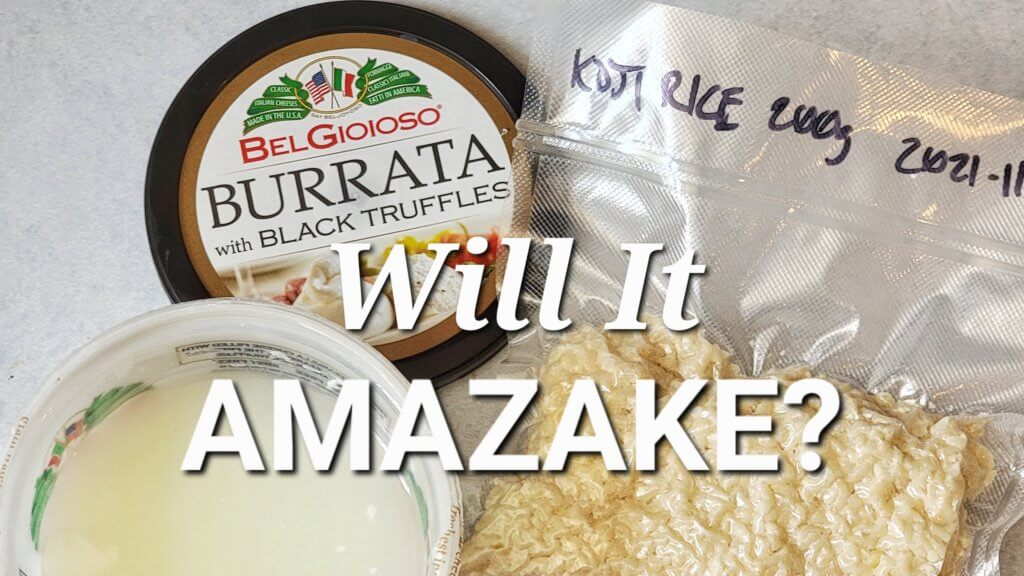
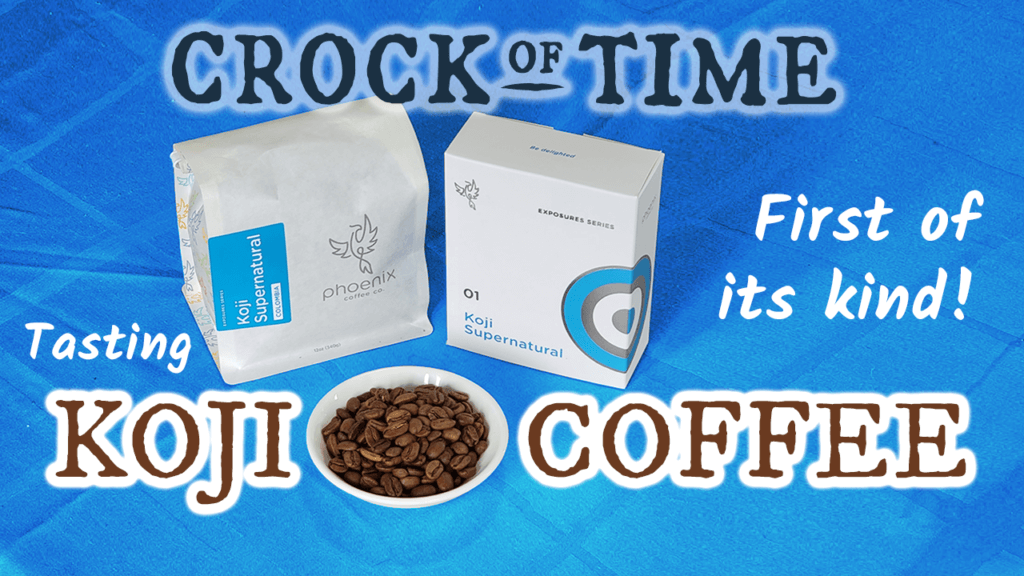
So… 2023 now.. how’s it doing? Have you made any with only koji, water, salt, and discard?
It’s looking really good now! It has darkened significantly overall. I know I need to update this, but life has been crazy recently.
I haven’t tried with discard only, but I don’t see why you couldn’t. You could probably continuously add discard to it, though at a certain point you’d probably want to stop adding to it to let it age.
I have enough bread ends & plenty of discard in my fridge. I am going to try this! Did you let the discard come to room temp or add it straight from the fridge?